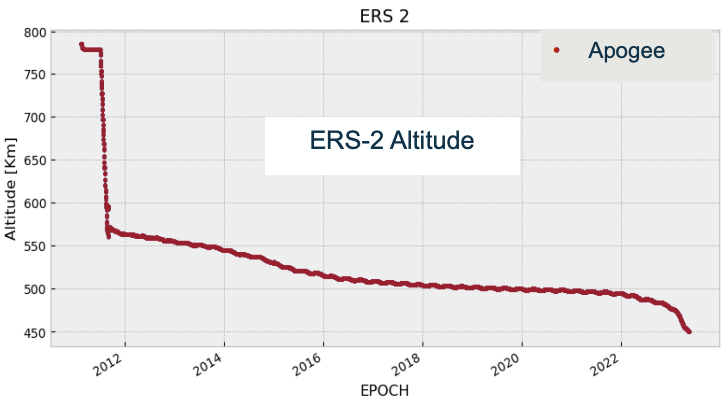A satellite will hurtle down to Earth this week and no one knows quite when or where itâs going to land â but thereâs no need to worry. In the space sector, this is standard operating procedure.Â
The satellite in question is the European Space Agencyâs ERS-2. Launched in 1995, the spacecraft set new standards for Earth observation. It was also an extremely durable machine. Despite an original mission life of just three years, ERS-2 made it to the ripe old age of 15 before its operations were terminated in 2011.Â
Although the satellite was still functioning nominally, ESA initiated a deâorbit to mitigate the proliferation of space junk â a growing threat as rocket launches surge.
The descent began with a sequence of 66 deorbiting manoeuvres. This consumed all the satelliteâs remaining fuel and lowered its average altitude from 785km to 573km, which reduced the collision risks.Â
ERS-2 was then âpassivatedâ â a process that removes the energy sources that could cause fragmentation or explosions. The remainder of the journey was then left to the cosmos.
As an uncontrolled re-entry, ESA couldnât determine the exact date of the return to Earth, but predicted that it would happen within the next 15 years.Â
Thirteen years later, the big day is almost here. ERS-2 has begun plunging into the lower layers of the atmosphere, where it will start burning up. But the precise time â and location â of the arrival on our planet remains unclear.


ERS-2 is almost home
ESAâs latest prediction â revealed this morning â is that the re-entry will take place at 12:14 CET on February 21. Thereâs an uncertainty window, however, of about two-thirds of a day (+/- 15.06 hours) â which is typical at this point.
The standard margin of error for these forecasts is 20%. Twenty-four hours before re-entry, for instance, the uncertainty should be around 4.8 hours, plus or minus.
This variability stems primarily from volatile solar activity. A collective term for all active phenomena on the Sun, from high-speed winds to flares, solar activity affects the drag that guides the speed and location of satellites. Itâs also hard to forecast.Â
Further curbs on the predictions include patchy tracking data, the complicated shape of reentering objects, mismodelling of conditions, and inexact computation. Forecasts can also be inhibited by our limited knowledge of the atmosphere in very low orbits.
When the big moment finally comes, most of ERS-2 will burn up in the atmosphere. Some fragments, however, may survive. The heaviest one that could reach Earth is the 52kg antenna structure of the Synthetic Aperture Radar (SAR).
Thankfully, the chances of it hitting anyone are miniscule. According to ESA, the annual risk of a person being injured by space debris is under one in 100 billion.






